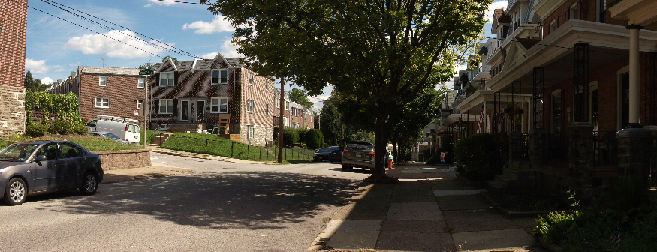 |
| Web of lines |
CHW was originally owned and maintained by the Pennsylvania Railroad (PRR) and as such accessed Center City via the PRR's right-of-way, nowadays the Northeast Corridor, via Zoo Interlocking and 30th St. into Broad St. Station, nowadays Suburban Station. This routing is highly circuitous and adds a good ten minutes to the line's schedule. It also involves a flat junction across the NEC, such that its outbound trains foul the entire Corridor; this has the side effect of inhibiting its schedule frequency. Clearly, a reconsideration of the Swampoodle Connection is needed in order to optimize existing services.
 |
| Phase 1. The dark blue represents the Reading lines, light blue the PRR. Orange is the first junction. |
 |
| Phase 2. The yellow line represents the extensions. |
The problem with this is, of course, that it would (again) create a fouling situation on the NEC, on top of being (again) an extremely circuitous entré into Center City from the north. On top of this, restarting commuter rail along the Reading main is an excellent skeletal framework for reconsidering the (underutilized) Stoney Creek Branch as a route into the city from the North Penn area, as well as the (currently a trail) former Perkiomen Branch, which would offer improved access to towns up the Perkiomen Creek Valley, most notably Collegeville-Trappe, Graterford, Schwenksville, and the Pennsburg-Green Lane-Red Hill area. Passenger service along the Reading main also offers the promise of electrification--to Phoenixville, in particular, shows promise--and possibly eventually Pottstown.
 |
| Phase 3: the red line superimposed on the previous works. |
If management wishes, a shallow tunnel can also be cut under the NEC in order to grade-separate the northbound junction at this phase (especially if Swampoodle can be achieved before Pencoyd), in order to offer full operational flexibility--even though the Norristown Line-to-NEC side of Swampoodle would have significantly less usage than the SEPTA-Main-to-Norristown-and-CHW-Lines side. Once Pencoyd is up and running, the Norristown-to-NEC side will be more a secondary path to be used mainly if the primary Pencoyd path has to be closed for any reason.
Swampoodle, like Pencoyd, is a potential interlocking with regionally-important implications. This post is intended to be a laying-out of a program to develop it to its full potential.
